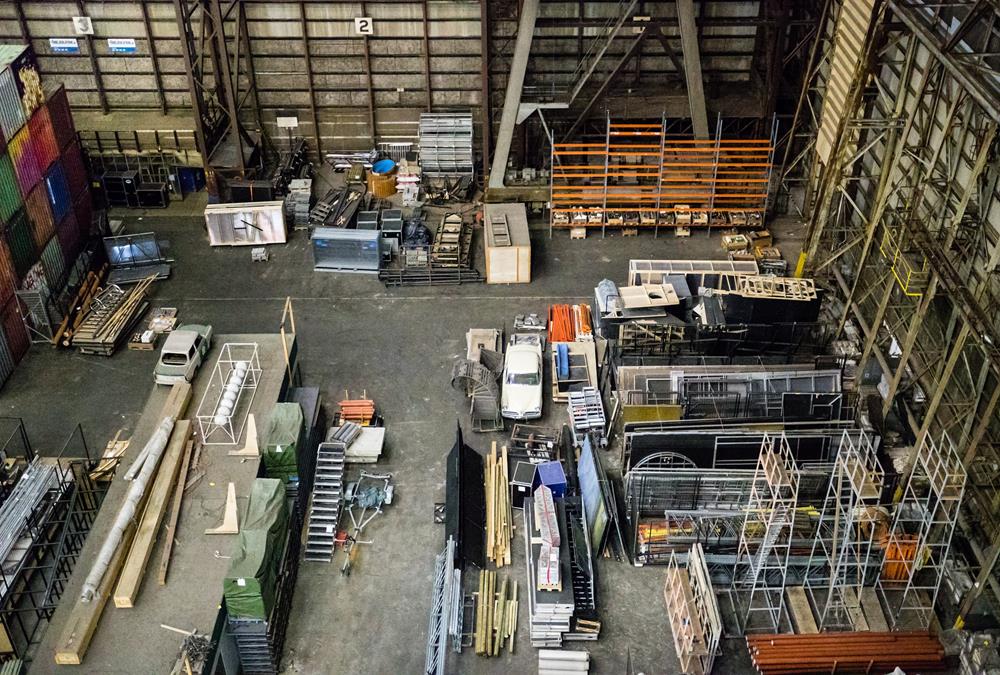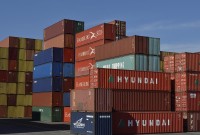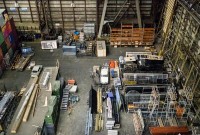- Home
- Business Processes
- Industry Knowledge
- Aerospace Industry
- Automotive Industry
- Banking Domain
- BFSI Industry
- Consumer/ FMCG Industry
- Chemicals Industry
- Engineering & Construction
- Energy Industry
- Education Domain
- Finance Domain
- Hospitality Domain
- Healthcare Industry
- Insurance Domain
- Retail Industry
- Travel and Tourism Domain
- Telecom Industry
- Leadership Skills
- eLearning
- Home
- Business Processes
- Procure to Pay
- Warehouse Layouts
Warehouse Layouts
One of the most important decisions when running a warehouse is its layout. Warehouse layout defines the physical arrangement of storage racks, loading and unloading areas, equipment and other facility areas in the warehouse. A good layout aligned with the business needs could have a significant effect on the efficiency.
One of the most important decisions when running a warehouse is its layout. Warehouse layout defines the physical arrangement of storage racks, loading and unloading areas, equipment and other facility areas in the warehouse. A good layout aligned with the business needs could have a significant effect on the efficiency of operations. Today’s business climate is competitive, which is why it is so important for business owners to make their warehouse planning and implementation as efficient as possible to drive growth and profits. Layout decisions are important as they require substantial investments of both money and effort. Layouts are long term commitments that have significant impact on the cost and efficiency of short-term operations .
Compliance regulations regarding layout is also a major parameter as it controls the effective utilization and operational efficiency of the storage facility. Based on the requirements, locations are kept away or near the demand centers.
Objectives to keep in mind while designing your warehouse layouts:
- Optimum utilization and accessibility of storage space
- Maximize available storage and adjust for future growth
- Achieve business objectives at minimum operating expenses
Before you start the design of the warehouse layout, look at your stock and inventory needs. You should plan and define your warehouse layout to meet changing needs including predicting the amount of stock you will need, as well as where you would like to store your inventory. Your warehouse layout should encompass all the different factors that create an ideal warehouse or distribution center, so that you can achieve optimal warehouse efficiency.
Factors for Warehouse Layout Design
Given below are some important points to consider while defining the layout for your warehouse:
- Layout should consider the physical requirements of your warehouse as well as the tasks, milestones, staffing, estimated hours, budget, and deadline.
- Consider how items will be stored and picked
- Establish high-priority and low-priority storages areas for optimum placement of goods.
- Divide your warehouse into zones to accommodate various storage needs, such as temperature requirements, or various turnover rates for items.
- Organize your items either based on material handling and storage traits, or by SKU and product description.
- Group locations by using physical capacity constraint settings.
- Estimate your inventory needs and consider the seasonality and demand of products
- Specify warehouse locations based on business needs (for example, site, warehouse, aisle, rack, shelf, or bin position).
Related Links
You May Also Like
-
Transport operations are often divided into full load and part load and due to economies of scale, the unit costs are higher for part loads. Our customer needs several part loads delivering, so it can reduce costs by consolidating these into full loads. Then it gets all the part loads delivered to a warehouse near the suppliers, consolidates them into full loads, and pays the lower costs of full-load transport to its operations.
-
Warehouses can be places where piles of packed or loose products occupy space. If left disorganized, it will become very challenging to identify products for packing or picking. Hence, proper organization of warehouse is very important. Warehouse labeling systems eliminate this problem by making sure products are easily identified and managed during the warehousing and shipping process. Labeling is the most functional and cost-effective way to keep your warehouse organized and operating efficiently.
-
One of the most important decisions when running a warehouse is its layout. Warehouse layout defines the physical arrangement of storage racks, loading and unloading areas, equipment and other facility areas in the warehouse. A good layout aligned with the business needs could have a significant effect on the efficiency.
-
Types of Inventory Count Processes
While dealing with lots of inventory in a warehouse, lots of things can go wrong. Shipments may not have the right number of units in them, or they could get damaged somewhere along the supply chain. Discrepancies in the stock may arise as part of every inventory control, and need to be corrected immediately after the inventory control procedure has been finished.
-
When a customer wants a product that has been stored in the warehouse, the same need to be picked off the shelf (or off the floor) and get it ready for shipping. Depending on how big is the warehouse, picking can take a while. (Many distribution centers cover more than 1 million square feet.). Hence, warehouse order picking methods are an important aspect within any warehouse.
-
Business Case of Multiple Warehouses
Adding extra warehouses to business provides many benefits such as reducing shipping costs, increasing storage capacity, and having warehouses for specific purposes to simplify overall warehouse management. Multiple warehouses allow you to organize your inventory in a way that helps your business be more effective.
-
The Outbound process starts with routing the shipments. The Outbound execution process starts from the point when pick tasks are completed for an outbound shipment and ends at the point where the outbound packages are loaded into trailers. The Warehouse Outbound process includes managing and controlling outgoing materials starting from the download of orders through to the shipping of products from the warehouse.
-
In the normal course of business, customers are likely to return orders from time to time due to various reasons and business should design processes the manage and accept such returns. A well designed returns management process can reduce costs and issues associated with returns or exchanges.
-
What is the difference between Warehouse Management & Inventory Management?
The terms “inventory management” and “warehouse management” are sometimes mistakenly used interchangeably as they both deal with operations and products of industries. Despite their few similarities, there are many notable differences between warehouse and inventory management systems.
-
Warehouses may seem like a simple, straightforward concept, but they actually include a variety of different types of warehouses that all have their own niche. The type of warehousing that’s right for you depends on your specific industry, location, and needs. From private warehousing, distribution centers, and climate-controlled warehouses, there’s an option to suit every business.
Explore Our Free Training Articles or
Sign Up to Start With Our eLearning Courses

About Us
Learning
© 2023 TechnoFunc, All Rights Reserved










